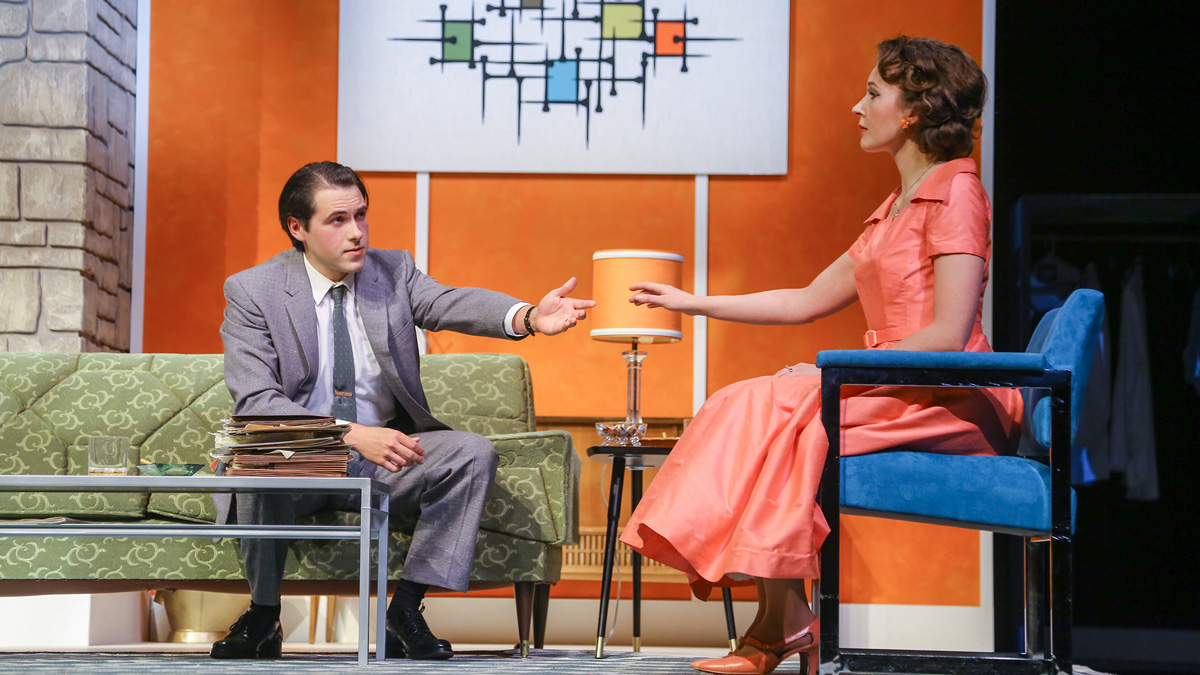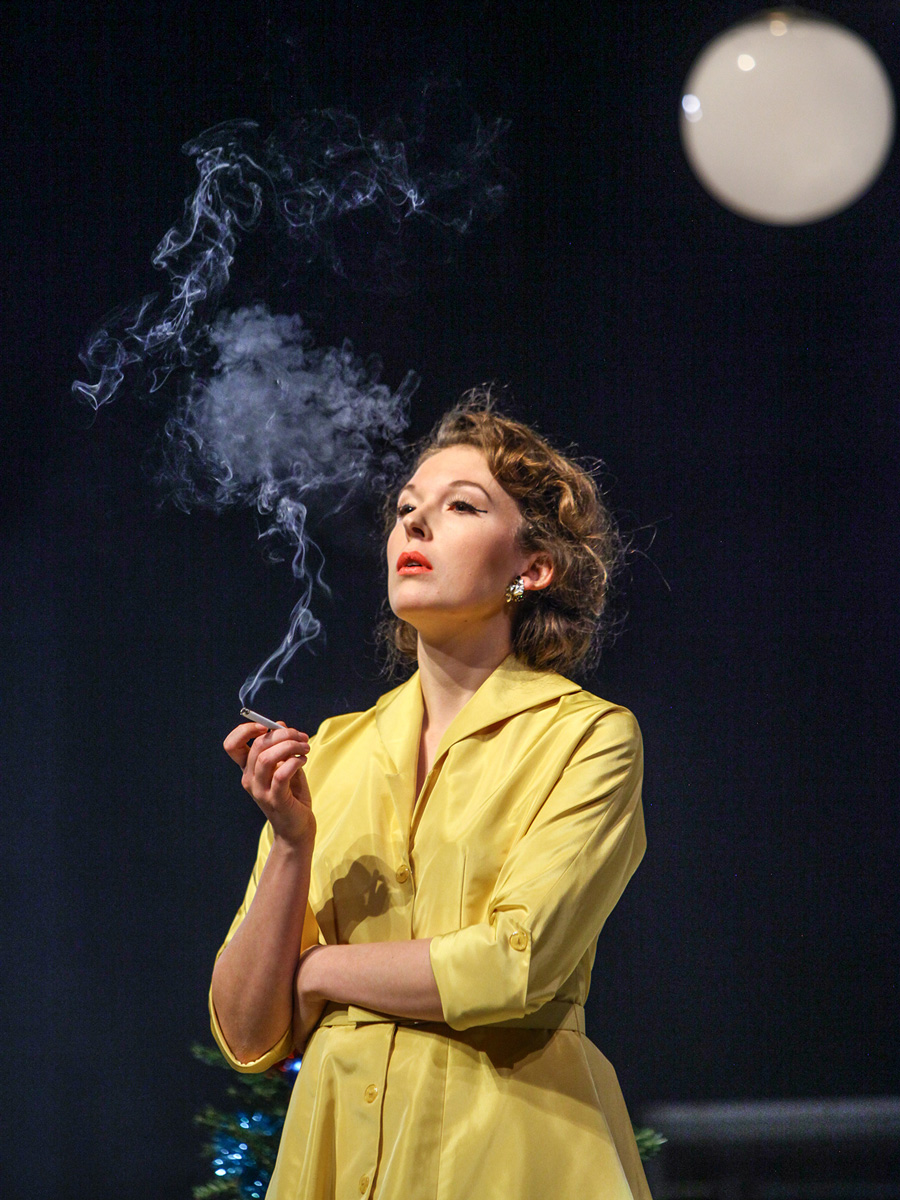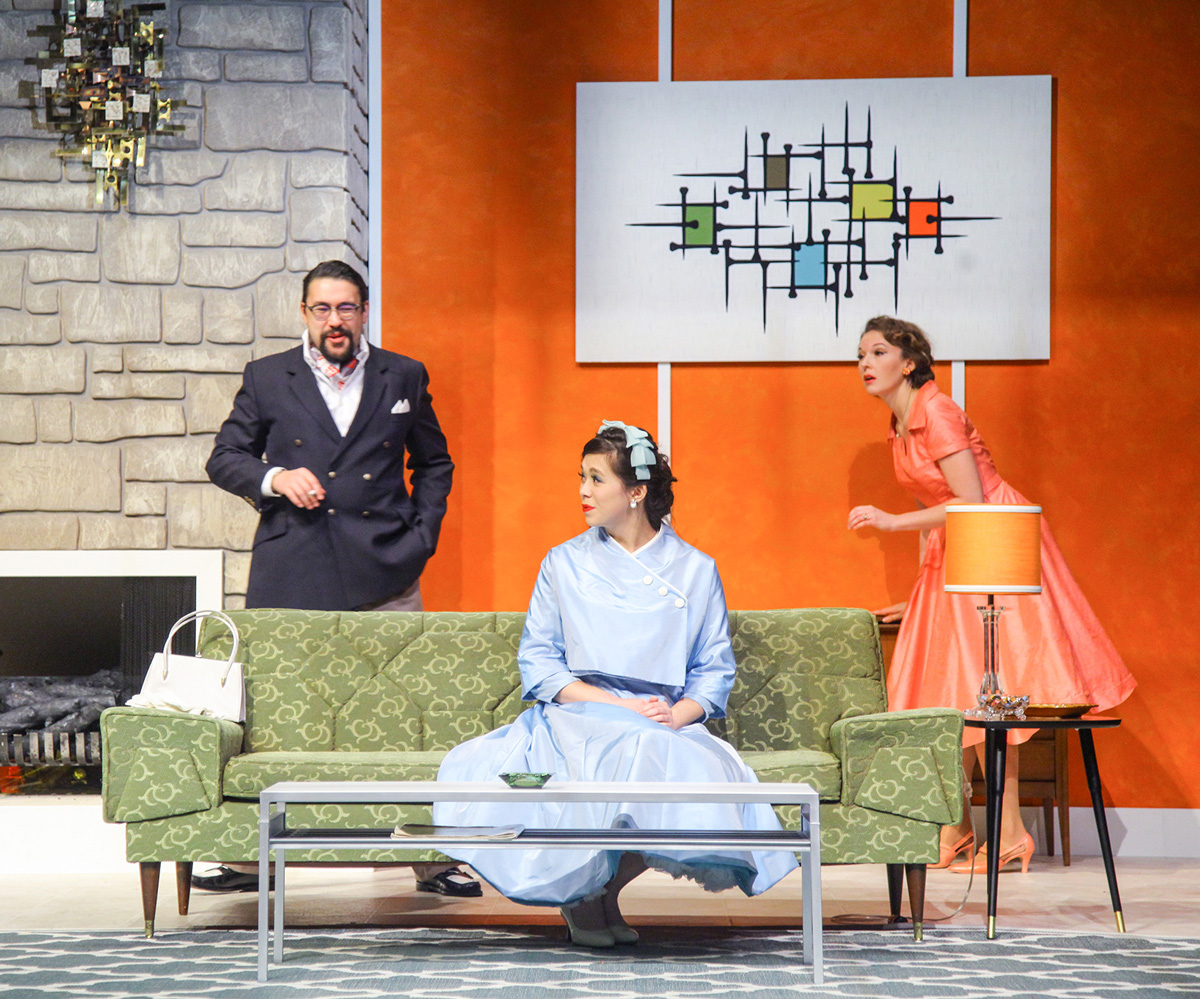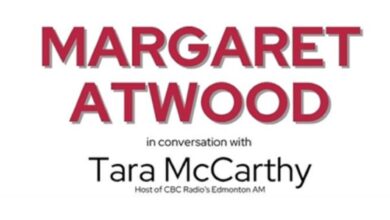Is this all? U of A Studio Theatre’s ‘Doll House’ shocks by omission
 Ed Ellis
Ed EllisWhat: U of A Studio Theatre production of Doll House, an adaptation of Henrik Ibsen’s A Doll’s House
Directed by: Beau Coleman
Starring: Gabby Bernard, Matt Mihilewicz, Alex Cherovsky, Kiana Woo, and Connor Suart
When: November 30 to December 9
Where: Timms Centre for the Arts
If you are fond of Ibsen’s original play and are seeking catharsis or feminist vindication this holiday season, listen: this is not the miracle you are looking for. Doll House is a gut-wrenching adaptation with a no-holds-barred approach to themes of misogyny, psychological anguish and suicide, marital rape, domestic violence, and gender-based systematic inequality.
Inspired by second-wave feminist activist Betty Friedan’s exploration of postwar discontentment among white middle-class housewives in The Feminine Mystique (1963), director Beau Coleman transposes Ibsen’s 19th-century story to the U.S. American city of Palm Springs in 1957. This cultural translation is not without its challenges. Typical 1950s diction is markedly different from current styles of speech, Coleman notes, and the cast had to train to achieve the appropriate cadence. To my unpractised ears, dialogue in Doll House takes on a stilted, self-consciously performative quality that subtly accentuates gender differences; think Lucille Ball in I Love Lucy, but without the laugh tracks.

The set and costumes, designed by Sofia Lukie and Robert Shannon respectively, are visually engaging and distinctive. Chic mid-century modern decor and bright pastel A-line dresses evoke the contemporary imaginary of 1950s middle-class America — which many twentysomethings have only encountered through Mad Men and retro fashions — without succumbing to tropes of nostalgia.
The modified English title Doll House hints at the conciseness of this adaptation; the cast is reduced to five characters (farewell, Anne-Marie), and some scenes have been excised altogether in favour of clarity. Gabby Bernard gives a compelling performance in the role of Nora, growing gradually distressed as the story unravels. She is effectively supported by Matt Mihilewicz’s paternalistic and appearance-conscious Tom Helmer. Even the intermission challenges to the conventional boundaries of theatre and life. Actors remain on stage — arguably still in character — and in full view of the audience throughout the break as the scent of so many anxious cigarettes wafts up to the auditorium.
It is rare for a classic to shock contemporary audiences. U of A Studio Theatre’s Doll House manages as much by denying the expected resolution, proposing instead: what if Nora never leaves? What if leaving is not an option? In the face of Nora’s abrupt disillusionment with Tom and her marriage, the social institution under which her life is primarily structured, the implications of this non-choice are devastating — there is no escape.

Despite its historical narrative context, Doll House can be understood as a disquieting reminder of the complicated, unfinished work of second-wave feminism. True to the controversial spirit of the realist problem play form which Ibsen helped formulate, and with tremendous sensitivity to the expectations and concerns of contemporary audiences, Coleman’s Doll House refuses to offer a vague escape. Fear triumphs over hope in Nora’s harrowing search for a miracle, and yet, we are free to imagine our own alternate endings and to act where she could not.




